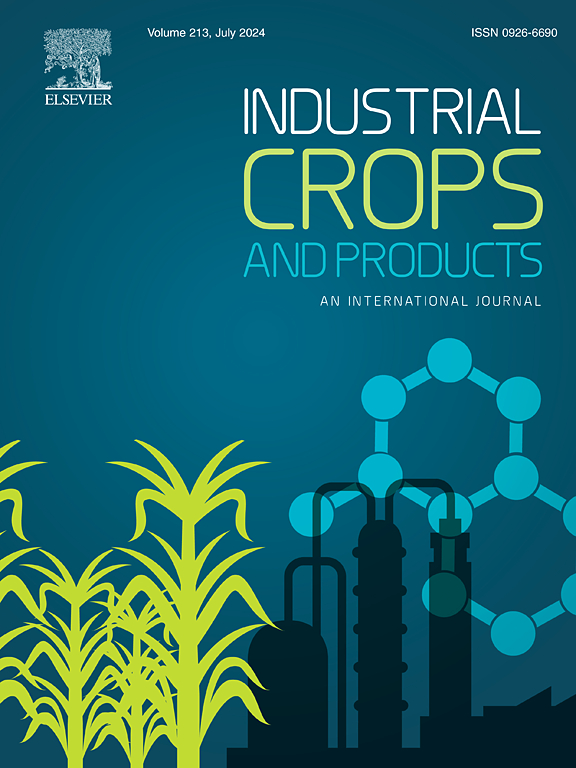One-pot conversion of lignocellulosic biomass into two high-value nanospheres with high conversion yields
IF 5.6
1区 农林科学
Q1 AGRICULTURAL ENGINEERING
引用次数: 0
Abstract
Maximizing the utilization of lignocellulosic biomass is challenging. Lignin nanospheres (LNSs) and cellulose nanospheres (CNSs) have been reported as high-value biomass-derived materials. Here, we developed a synchronous conversion of lignocellulose into LNSs (particle size: 423.5 ± 66.9 nm) and CNSs (particle size: 34.7 ± 5.2 nm), achieving conversion rates of 85.99 % for corn stover lignocellulose and 73.57 % for bamboo lignocellulose. First, lignocellulose was dissolved and subjected to ultrasonic treatment. Subsequently, deionized water was added to facilitate the spontaneous organization of lignin and cellulose into LNSs and CNSs. The undissolved residue underwent six cycles of this process to maximize the conversion efficiency. The optimal ultrasonic treatment time was 30 min, and ultrasonic action played a pivotal role in achieving high conversion rates. By decreasing the particle size of lignocellulose, reducing the degree of cellulose polymerization within the lignocellulose, and facilitating the separation of lignocellulose components, ultrasonic treatment enhanced the dissolution ratio, ultimately leading to improved conversion rates.
求助全文
约1分钟内获得全文
求助全文
来源期刊

Industrial Crops and Products
农林科学-农业工程
CiteScore
9.50
自引率
8.50%
发文量
1518
审稿时长
43 days
期刊介绍:
Industrial Crops and Products is an International Journal publishing academic and industrial research on industrial (defined as non-food/non-feed) crops and products. Papers concern both crop-oriented and bio-based materials from crops-oriented research, and should be of interest to an international audience, hypothesis driven, and where comparisons are made statistics performed.
 求助内容:
求助内容: 应助结果提醒方式:
应助结果提醒方式:


